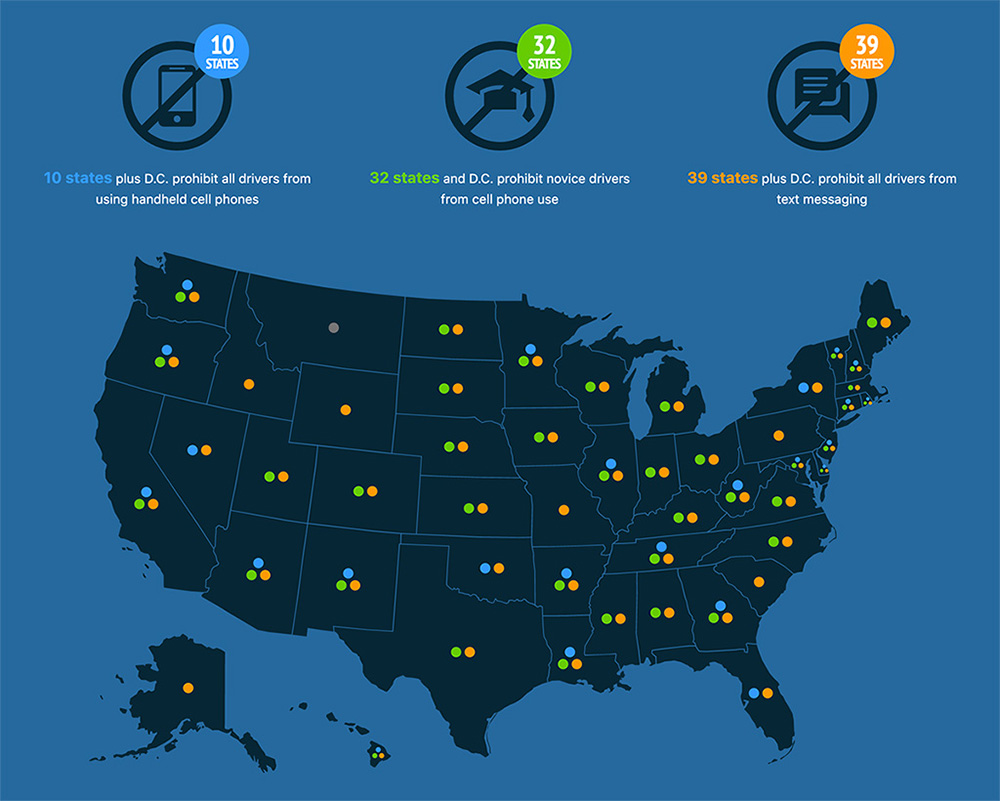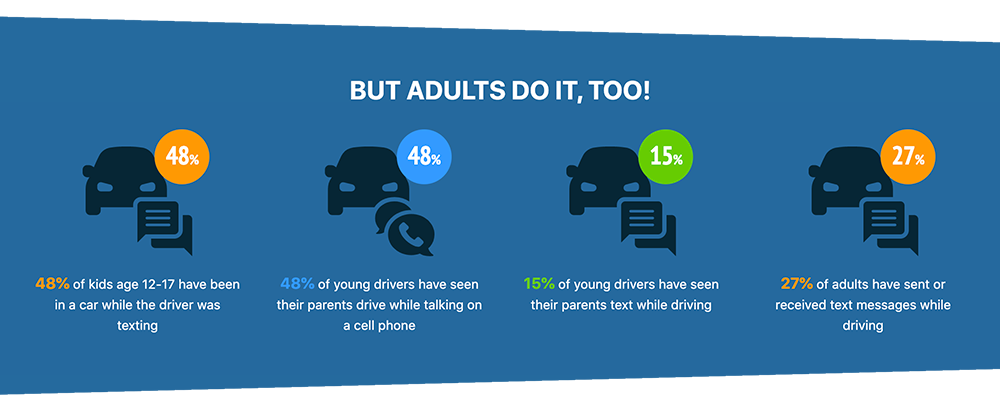Distracted driving has become a dangerous practice on our streets and highways. In 2017 alone, 3,166 people were killed in crashes involving distracted driving, according to the National Highway Traffic Safety Administration (NTHSA). And between 2012 and 2017, 9.5 percent of all fatal crashes involved a distracted driver, resulting in nearly 20,000 deaths.
Aside from the statistics of crashes, deaths and injuries, here are some graphics that can show you just what it is you’re doing when you choose to text and drive, why it is so dangerous, and what can be done to prevent it.
1. You’re Taking Your Eyes Off the Road
Five seconds is the minimal amount of time your attention is taken away from the road when you’re texting and driving. If you’re traveling at 55mph, then that means you will drive the length of a football field without looking at the road. As any Aggie fan knows, a lot can happen in 100 yards.

Of all the activities associated with distracted driving, sending text messages is the most dangerous. A person is 23 times more likely to have a motor vehicle crash while sending a text message than if they were only driving. That number towers over the other activities associated with distracted driving.
Source: textinganddrivingsafety.com
2. You May Think You Can Do It … But You Can’t, Safely
A big part of the problem: People don’t think it’s a problem.

- 77 percent of young adults are very or somewhat confident that they can safely text while driving.
- 55 percent of young adult drivers claim it’s easy to text while they drive.
But it’s a big problem: Teens who text while driving spend approximately 10% of their driving time outside of their lane.
Source: textinganddrivingsafety.com
3. It’s Illegal in a Lot of Places – Including Here in Texas

In 2017, the Texas Legislature passed a statewide ban on using a wireless communications device for electronic messaging while operating a motor vehicle. Texting, as well as reading or writing email, is prohibited while driving in Texas.
Many local areas have passed stricter ordinances which completely limit any cell phone use while driving, so it is the responsibility of drivers to learn the laws in their local areas.
Sources: Texas Department of Transportation, textinganddrivingsafety.com
4. Hey Adults! You Have to Set the Example!

Why wouldn’t young drivers think it’s okay to text and drive? They’ve seen other people do it, perhaps even their parents. This is where adults can help educate on the dangers of distracted driving — by setting the example and taking the “it can wait” approach.
There are also many different resources for parents to help educate their kids about distracted driving. From text-free-driving pledges to drivecams that monitor a driver’s activity and provide real-time video, there are lots of ways to curb this growing epidemic.
Source: textinganddrivingsafety.com
Conclusion: It’s Dangerous! Just Don’t Do It!
For more information on the dangers of texting and driving, check out some of these websites:
Share This: 







